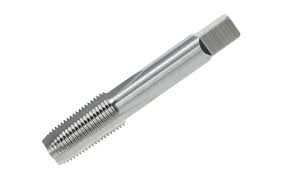
Author: chris
Are existing measures for dropped object protection sufficient?
In recent years the hazard of dropped objects has risen to become the second most deadly hazard in the Australian workplace. Between 2010 and 2014 work related fatalities caused by dropped objects was only superseded by vehicle accidents on public roads.
We all know that the resource, construction and utilities work environment is a dangerous space, but we also do a lot to minimise the risk to all those who are exposed to these hazards. The question is – are we doing enough?
In the connection of dropped objects, the traditional measures of managing the risk involves hard hats, drop zones, barricades etc. In the light of todays alarming statistics – are these sufficient?
In reality, all these measures are second chances. They certainly have a place in every ‘falling object risk management plan’, however it needs to be recognised that they are literally second chances, designed to hopefully minimise the damage caused by an object that has been dropped and is hurtling towards the ground totally out of control…
In contrast to this, some items are NEVER allowed to drop…They are called people! Personnel height safety is non-negotiable and is promoted and invested in heavily at all levels.
What about the tools? In today’s world ‘dropped tools’ is a serious risk in every workplace involving heightwork and the question needs to be asked….“Are second chances sufficent?
Local insurance brokerage firm Ausure Horizon offer comprehensive insurance policies incase something goes wrong on your site. Whether you are a tradesmen working at heights or a CNC machinist who requires public liability insurance, our friends at Ausure Horizon can help.
STOP THE DROPS available from P&A Engineering Supplies Newcastle NSW
Article from Technique Solutions
Which Lubricant do I use?
| Hocut | Honing | Cut-Max |
|
Hocut 795B Hocut 400K A versatile coolant that can be used in many applications on a wide variety of metals Cindol 305D
Houghto-Grind ® |
Honing Oil MM
Rust Veto ® |
Cut-Max 226S
Cindol ®
Houghto-Draw ® |
Houghton products are available in both semi-synthetic and full synthetic, providing clean running, heavy duty performance and the latest technology. Houghton metalworking fluids are capable of providing long sump life with low odour and unique resistance to bacterial and fungal growth, as well as excellent machining performance on both ferrous and non-ferrous metals.
Houghton’s comprehensive range also offers extended tool life for applications ranging from light duty cutting to heavy duty broaching. Our grinding fluids provide for both high speed grinding, as well as specialised applications. Our products address common operational demands, such as high lubricity, extended tool life, light colour, low odour, and reduced misting.
Other Product Lines
– Hydraulic Oils
– Fire Resistant Hydraulic Fluids
– Heat Treatment Fluids
– Metal Cleaning
– Metal Surface Finishing Products
– Beverage Can
– Offshore Technology
– Paper Chemicals
– Rolling Products
– Specialty Additives
BA Thread Data
| Thread | TPI | Major Dia. | Pitch | Tapping Drill | |
|---|---|---|---|---|---|
| 0 | 25.4 | 6.0mm | 1.00mm | No. 5 | 5.1mm |
| 1 | 28.2 | 5.3mm | 0.9mm | No. 14 | 4.5mm |
| 2 | 31.3 | 4.7mm | 0.81mm | No. 22 | 4.0mm |
| 3 | 34.8 | 4.1mm | 0.73mm | No. 29 | 3.45mm |
| 4 | 38.5 | 3.60mm | 0.66mm | No. 31 | 3.00mm |
| 5 | 43.1 | 3.20mm | 0.59mm | No. 36 | 2.65mm |
| 6 | 47.9 | 2.8mm | 0.53mm | No. 41 | 2.30mm |
| 7 | 52.9 | 2.5mm | 0.48mm | No. 45 | 2.05mm |
| 8 | 59.1 | 2.2mm | 0.43mm | No. 49 | 1.80mm |
| 9 | 65.1 | 1.9mm | 0.39mm | No. 52 | 1.55mm |
| 10 | 72.6 | 1.7mm | 0.35mm | No. 54 | 1.40mm |
| 11 | 81.9 | 1.5mm | 0.31mm | 3/64″ | 1.20mm |
| 12 | 90.7 | 1.3mm | 0.28mm | No. 57 | 1.05mm |
| 13 | 102.0 | 1.2mm | 0.25mm | N0. 60 | 0.975mm |
| 14 | 110.0 | 1.0mm | 0.23mm | No. 66 | 0.775mm |
Sourced from http://www.royalsignals.org.uk/articles/threads.htm
Tips for machining stainless steel
Machining Stainless Steel?
Directions for Stainless Steels Machining
Stainless Steels are well known thanks to it”s superior corrosion-resistance.
Superior corrosion-resistance of stainless steels results from higher Cr content as an alloy-element.
Cr content is more than 4% in general, mostly more than 10%.
Classifications of Stainless Steel
1) Austenite series : It is a most general kind of stainless steels and has the best corrosion-resistance due to
high Cr content and Ni. On the other hand, High Ni content makes machining difficult. It is used for can of
foods, chemical products and construction purposes. (AISI303, 304, 316, STS303, 304, 316)
2) Ferrite series : It has similar Cr content with Austenite series, but none of Ni content results in easy
machining. (AISI410, 430, 434, STS410, 430, 434)
3) Martensite series : It is the only stainless steels able to be heat treated. It has high carbon content and corrosion
resistance is not so good, so it is used for a parts that need higher hardness.
(AISI410, 420, 432, STS410, 420, 432)
4) Precipitate hardened series : As a Cr-Ni alloy, it has improved hardness through low temperature heattreatment
and has superior corrosion-resistance and toughness at the same time. (AISI 17, 15)
5) Austenite-Ferrite series : Though it has similar properties with Austenite and Ferrite, it has much superior
heat-resistance (approx. 2 times better). It can be used at the place where require thermal-corrosion
stability such as condenser (AISI S2304, 2507)
Hard to cut factors of Stainless Steel
1) Work-hardening – Cause premature wear of tool and makes it hard to chip control.
2) Low thermal conductivity – Cause plastic deformation of cutting edge and fast wear of tool.
3) Build-up-edge – Easy to make micro-chipping on cutting edge and cause bad surface-finish.
4) Chemical affinity between tool and work-piece caused by work-hardening and low thermal-conductivity of
work-piece, generates easily not only normal-wear but also chipping and abnormal fracture.
Tips for machining Stainless Steel
1) Using a tool has higher thermal-conductivity: Low thermal-conductivity of Stainless steels accelerates wear resulted from decline of hardness of cutting
edge due to heat pile up.
2) Sharper cutting edge-line: It is necessary to make rake-angle bigger and chip-breaker land wider to reduce cutting-load and prevent
build-up-edge so that chip is treated well.
3) Optimal cutting condition: Inappropriate machining conditions like extremly low or high-speed, too low feed rate, can cause poor tool
life due to work-hardening of work piece.
4) Tools: Tools for Stainless steels should have good toughness and strength on edge-line & film adhesion has to be
higher.
Who we supply too?
Our Partners Tempest Bicycles is a local custom Bicycle Builder in Newcastle. Handmade in the Hunter Valley with care and precision, Rob's work is sensational. Rob uses P&A's cutting discs, coolant and fluids when building his bikes. For over 20 years Rob has been developing his craft, turning his cycling passion into an steel frame art business located just north of Newcastle NSW. Reliant Pest and Building is Newcastle's leading Pest & Building Inspections, Thermal Imagers, Building Inspections, Pest Inspections and Pool Inspections. They utilise our thermal imaging technology and fasteners when fixing buildings. Cycle Fitness Nutrition is Newcastle's premier cycling store. With decades of experience, CFN provides its customers with high quality bicycles, helmets, shoes, mountain bikes, road bikes, time trial bikes and more. CFN utlises our HEX tools and storage solutions in their workshop. They are located in 250 Brunker Road Adamstown and ready to take on any cycling challenge. Fred from Exterior Coat Painting is Newcastle's leading roof restoration specialist. Exterior Coat Painting can paint any roof in Newcastle, Central Coast and Hunter Valley for you. Exterior Coat Painting makes us the Roof painting specialists in Newcastle, the Hunter Valley, Central Coast and Maitland, from Medowie, Shoal Bay and to Ourimbah NSW and nearby areas. Fred is a licensed contractor and WILL meet the high standards of NSW roofing. He utlises our fasteners and height safety equipment when fixing roofs. Contact Newcastle's Roof restoration specialists for a comprehensive quote today.
FREE SHIPPING Australia Wide
For orders over $300ex, we offer FREE shipping Australia Wide!
USE CODE: FREESHIP
Conditions:
- Excludes Fasteners, Lubricants, Coolant, Cleaning, Precision Measuring and Storage items
- Bulky goods including (but not limited to) drums, pallets, containers, etc
- Anything greater than 500mm in diameter, length, width or height
- Goods which are dispatched directly from the manufacturer
- Must spend a minimum of $300ex
- Orders are generally shipped within 24-36 business hours
- Online purchases only
- Excludes Dangerous Goods
- Subject to change without notice
Best Drilling Practices
The flute form, web thickness and helix angle of the standard drill are suitable for most materials producing semi-continuous chips. Drilling sizes of 13mm and smaller in soft materials which produce continuous chips, e.g. copper, aluminium. A bright finish fast helix drill may be required to move the swarf more effectively. Conversely on materials producing discontinuous chips like brass, gunmetal and some plastics, a slow spiral is preferable. For effective drilling, the rigidity of the drill and work piece are most important. The shorter the flute length, the more rigid the drill. Long drills must be adequately supported to reduce vibration, or stage drill as opposite. Heavy duty thick web drills may be necessary on the more difficult materials, or when work lacks rigidity. These drills must be point thinned or have split points. The following are important in drill use:
1. Clamp the work-piece securely
2. Select the correct speed and feed
3. Use an appropriate coolant and lubrication
4. When using a taper shank drill, use a soft face hammer or wood block for insertion
5. Ensure the shank is securely held. Avoid using worn sockets or drill chucks as the drill may slip during use
6. Regrind the point before it dulls, do not force a worn drill
7. Deep hole drilling, withdraw frequently to clear the chips deep holes – start at 4 times diameter
8. Opening out existing hole, do not use a 2-flute twist drill, use a 3 or 4 flute core drill. Pilot holes should be 1.5 times the chisel edge length
9. Stainless, Manganese and high tensile steels, use an automatic feed throughout the drilling cycle. Do not allow the drill to dwell, as it will cause work-hardening. Use a slower speed and heavier feed than on easier machined materials.
DEEP HOLE SERIES DRILLING
Holes deeper than nominally three times the drill diameter may need special methods to clear the swarf, especially when drilling horizontally with standard flute design.
Series drilling: a series of longer drills may be used successively:
FIRST DRILL
This should be either a stub drill or a jobber drill used down to the flute length and pecking at intervals after 3 times the diameter in depth to clear the swarf. Alignment of the first drill is very important as all subsequent drills will wander further from this location.
SECOND DRILL
A long series drill to be used as above with pecking about every diameter in depth.
THIRD & SUCCESSIVE DRILLS Extra length drills of increasing flute lengths may be used successively to the required depth, pecking may be required at only half the diameter on extreme depth
PARABOLIC FLUTE DRILLS Are specifically designed for deep hole drilling and clearing the swarf without pecking down to 10 times the diameter on the materials that produce long continuous swarf.
RESHARPENING OF TWIST DRILLS
Unless a drill is correctly resharpened the efficiency is greatly reduced. The general features to be observed are:
1. Resharpen before the drill becomes too dull
2. Maintain:
a. the correct point angle
b. Correct lip clearance
c. Equal cutting edge length
d. Equal cutting edge angles
e. Correct web thickness
f. Relative lip height to a close tolerance
g. Never quench the drilling water to cool it. Never grind using a trickle of water. These two methods are likely to produce hair line surface cracks owing to the local heating and quenching. Grind either under a gush of water, or perfectly dry and allow to air cool.
Sourced from our good friends at Sheffield.
Taps and Dies: Best practices!
6 measurements of features other than size
- Surface Finish: The degree of the surface may be due to the machining method, type of material and the condition of the machine and tooling.
- Flatness and Straightness: The fundamental basis for all linear measurements is a reference plane and there is no measuring instrument or manufacturing process which cannot be traced back to its use in one form or another.
- Squareness: The measurement or truth to 90 degrees can be measured using enginers try squares, block squares or cyclinder squares.
- Roundness: Out of round errors can occur when machines are worn or when they are very new.
- Coencentricity: Checking the circular path in relationship to another on the same axis or position.
- Angular Correctness: Ordinary protractoers are graduated in degrees and can be used to detect the correct angle for your machining job.









